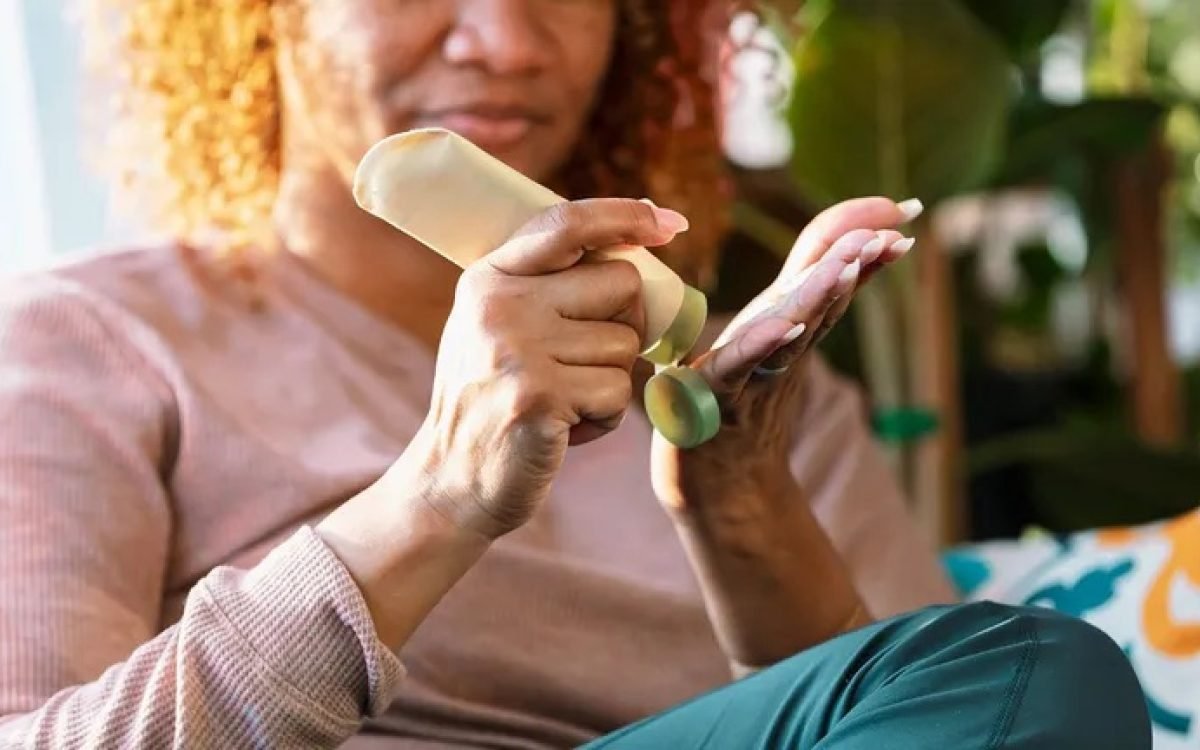When you reach for your favorite lotion, shampoo, or foundation, the last thing on your mind is cancer. But according to recent findings published in Environmental Science & Technology Letters, the products you use every single day could be silently putting your health at risk—especially if you’re a Black or Latina woman.
A new survey reveals a shocking truth: over half of Black and Latina women may be regularly exposed to formaldehyde or formaldehyde-releasing chemicals in their beauty routines. This invisible threat isn’t just a matter of discomfort or irritation—it’s linked to a significantly increased risk of uterine cancer, a disease that already disproportionately affects women of color.
🔍 The Study That Uncovered a Quiet Crisis
In a small but eye-opening study conducted in Los Angeles, researchers asked 70 Black and Latina women to document every personal-care product they used over a one-week period. That meant photographing product labels, logging ingredients, and detailing each use.
By the end of the study, over 1,100 products were logged. And what researchers found was deeply concerning:
53% of participants used products containing formaldehyde or formaldehyde-releasing preservatives (FRPs). These weren’t rare or obscure products—they were common, everyday items like face creams, shampoos, body washes, deodorants, and even baby wipes.
The most common culprits? Ingredients like DMDM hydantoin, diazolidinyl urea, quaternium-15, and imidazolidinyl urea—chemical preservatives that slowly release formaldehyde over time to prevent microbial growth in water-based formulas.
⚠️ What Is Formaldehyde, and Why Is It So Dangerous?
Formaldehyde is a colorless, strong-smelling chemical commonly used in building materials and as a preservative. It’s also a known carcinogen, classified by the U.S. Environmental Protection Agency (EPA) and the International Agency for Research on Cancer (IARC).
Even in small doses, prolonged exposure to formaldehyde can cause:
Respiratory issues Skin irritation and allergic reactions Endocrine disruption Increased risk of uterine cancer and leukemia
And yet, it’s still present in hundreds of beauty products on the U.S. market.
The danger lies in accumulated exposure. A little bit from a face cream, a touch more from hair gel, and some extra from body lotion adds up. Over years, that chronic exposure can take a serious toll—especially when products are used daily, and sometimes multiple times a day.
👩🏽⚕️ Why This Hits Women of Color the Hardest
This is not just a cosmetic issue—it’s a health equity issue.
Black and Latina women have long been targeted by the beauty industry with specialized marketing for hair relaxers, skin lighteners, and styling products. Many of these items have higher concentrations of harsh chemicals than those marketed to white consumers. Add that to socioeconomic factors, limited access to clean beauty alternatives, and less public health awareness in these communities, and the problem becomes systemic.
Research shows that Black women are nearly twice as likely to die from uterine cancer as white women. Latina women also face elevated risks of hormone-related cancers. The formaldehyde connection offers a disturbing explanation that needs more urgent attention.
🧼 Formaldehyde’s Many Aliases: What to Watch For
Formaldehyde rarely shows up by name. Instead, it hides under chemical aliases—making it hard for even the most diligent shopper to detect.
Watch out for these common formaldehyde-releasing ingredients:
DMDM Hydantoin Diazolidinyl Urea Imidazolidinyl Urea Quaternium-15 Bronopol Sodium Hydroxymethylglycinate Glyoxal
If you see any of these on a product label, it’s best to steer clear—especially if you use that product regularly.
💡 What You Can Do: Protecting Yourself & Your Community
You don’t have to toss your entire beauty cabinet overnight—but becoming aware and making smarter choices can make a real difference over time.
1. Simplify Your Routine
Use fewer products with longer ingredient lists. Stick to brands that are transparent about what’s inside.
2. Go Water-Free When Possible
Formaldehyde-releasing preservatives are mostly used in water-based formulas. Choosing balms, oils, or powders can reduce exposure.
3. Use Ingredient Scanning Tools
Apps like Think Dirty, Detox Me, or EWG’s Skin Deep let you scan or search a product to learn how safe its ingredients are.
4. Advocate for Safer Beauty Laws
The U.S. is far behind the EU, where over 1,300 harmful ingredients are banned in cosmetics (compared to just 11 in the U.S.). Support legislation that demands better oversight, clear labeling, and bans on known carcinogens.
5. Spread the Word
Share this information with friends, family, and your community—especially other women of color who might not be aware of these risks.
🕊️ Beauty Shouldn’t Cost You Your Health
Beauty should be a source of joy, self-expression, and empowerment—not a hidden health risk. For too long, women—especially Black and Latina women—have been exposed to dangerous chemicals in the pursuit of cultural beauty ideals.
It’s time to demand more from the beauty industry. Safer products. Transparent labeling. And above all, respect for the bodies and health of all women, not just those with the privilege to shop clean.
When you know better, you glow better. Let that be the real beauty revolution.






